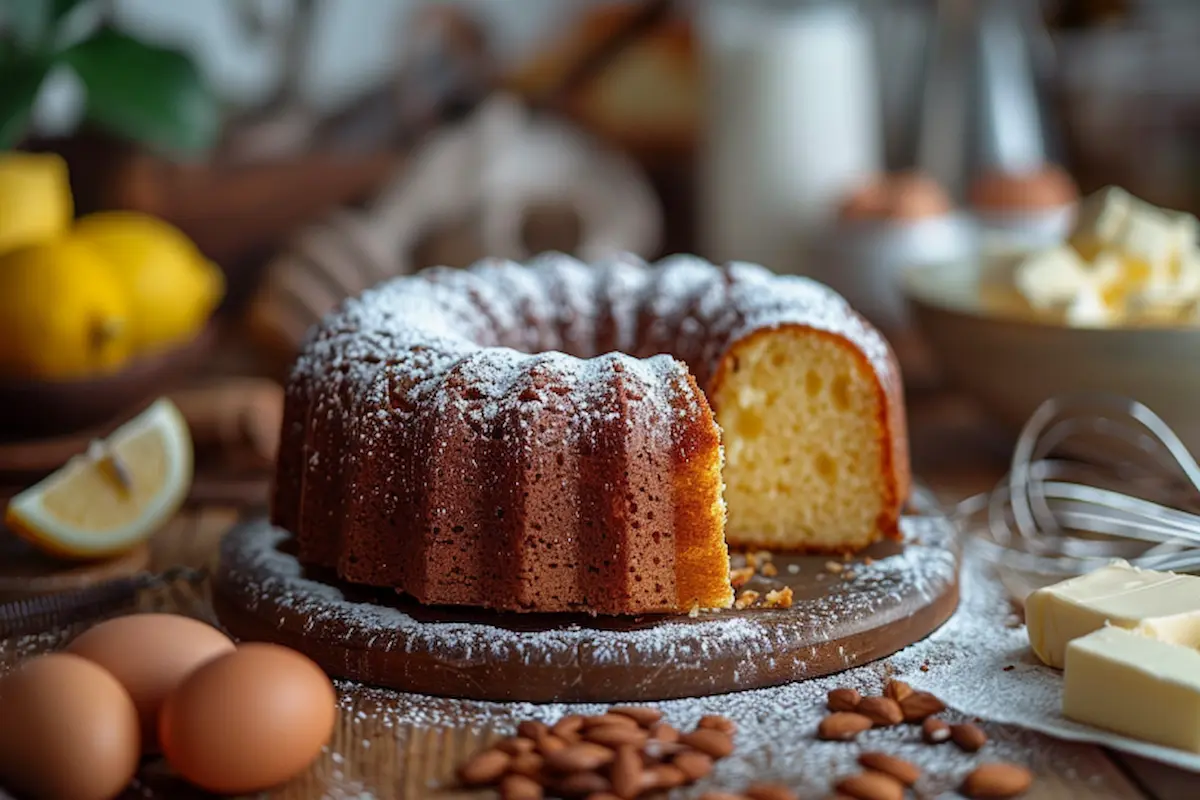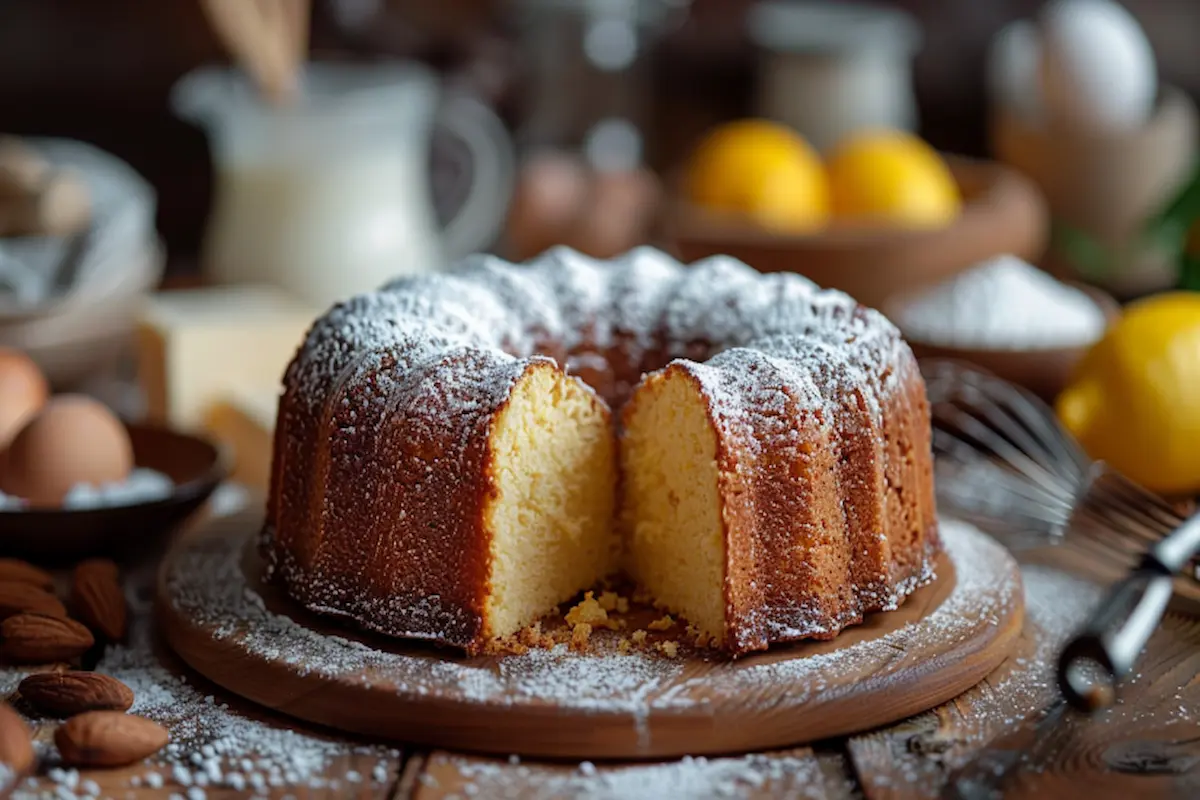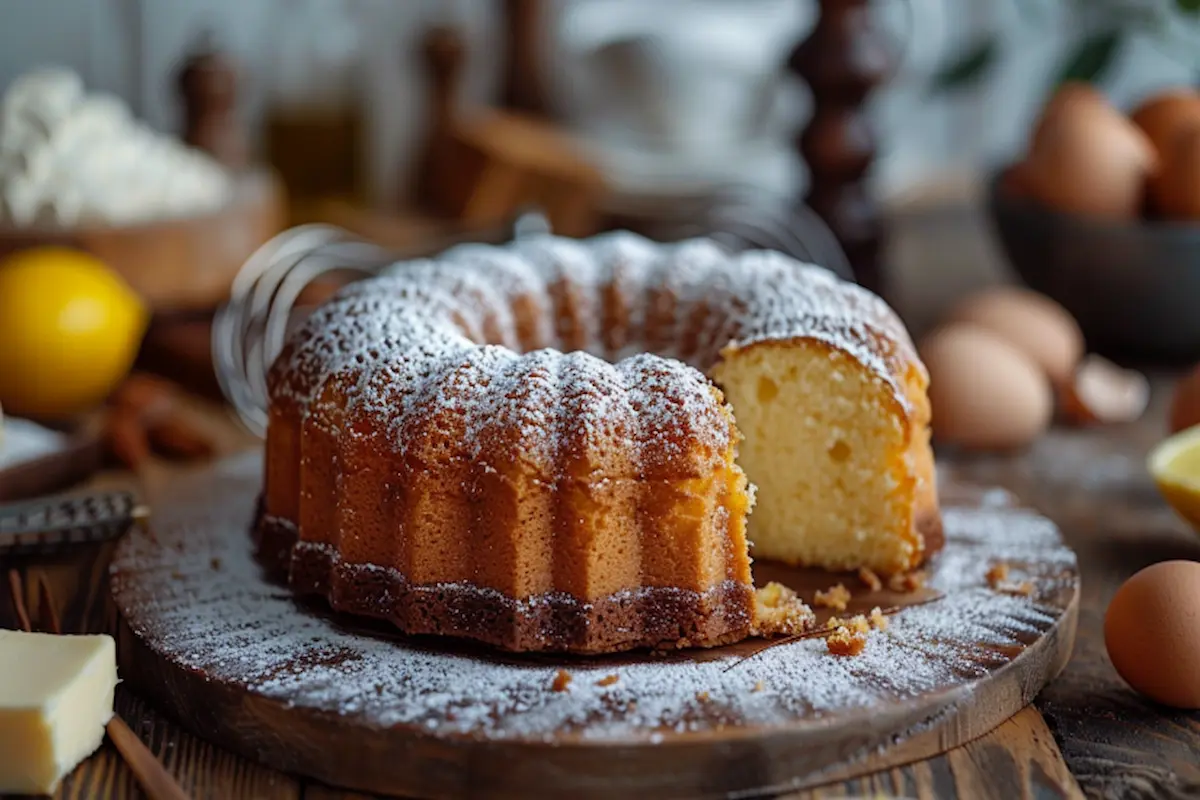Pound Cake Guide: The Ultimate Recipes
Pound cake is a quintessential dessert that has been cherished for centuries. Its simplicity, rich flavor, and versatility have made it a staple in kitchens around the world. In this article, we will explore what sets pound cake apart from other cakes, how to keep it moist, and delve into the many variations that can be created from this classic recipe. Additionally, we’ll provide tips on serving pound cake and include links to related recipes and baking techniques to help you master this beloved dessert.
What Makes a Pound Cake Different from a Regular Cake?
distinguishes itself from other types of cakes primarily through its ingredients and texture. Traditionally, a pound cake is made with a pound each of flour, butter, eggs, and sugar. This 1:1:1:1 ratio gives the cake its name and is responsible for its dense and moist texture. Unlike other cakes that might rely on chemical leaveners like baking powder or baking soda to achieve a light, airy texture, pound cake’s rise comes solely from the air incorporated during the creaming of butter and sugar.
Classic Ingredient Ratios
The simplicity of pound cake ingredients means that each plays a critical role in achieving the cake’s final texture. For example, the butter provides richness and moisture, while the eggs add structure and help bind the ingredients together. The sugar not only sweetens the cake but also contributes to its tender crumb. The flour provides the necessary body, but because no additional leaveners are used, the cake’s structure is heavily dependent on the careful mixing of ingredients.
For those interested in exploring variations on classic ingredient ratios, the Key Lime Cake offers a delightful twist with its tangy flavor profile, perfect for adding a refreshing note to your dessert repertoire.

Comparison with Regular Cakes
Regular cakes, such as a light and fluffy sponge cake, often incorporate additional ingredients like milk, oil, or buttermilk to achieve a different texture. These cakes are typically less dense than pound cakes and may include fillings or frostings that add moisture and flavor. The inclusion of leavening agents in regular cakes allows for a lighter texture and more complex flavor profiles. For example, the Philadelphia Cheesecake is known for its creamy, rich texture, which is achieved through the use of cream cheese and a crumbly crust.
Flavor Adaptability
One of the reasons pound cake remains so popular is its adaptability. The basic recipe can be easily modified to incorporate various flavors, from the addition of vanilla or almond extract to more elaborate ingredients like chocolate or citrus zest. This versatility allows bakers to create a wide range of pound cake variations, each with its own unique taste and appeal.
For those who enjoy experimenting with flavors, the Chocolate Pound Cake offers a rich and decadent alternative to the traditional recipe, while the Lemon Pound Cake adds a refreshing citrus twist that’s perfect for summer.
How Do You Keep Pound Cake Moist?
Maintaining moisture in pound cake is essential to enjoying its rich, buttery flavor at its best. Because of its dense texture, pound cake can easily dry out if overbaked or improperly stored. Here are some tips to ensure your pound cake stays moist and delicious.
Baking Techniques
One of the key factors in keeping pound cake moist is proper baking technique. It’s important not to overmix the batter, as this can result in a tough cake. Additionally, baking the cake at a lower temperature, typically around 325°F (160°C), allows it to cook more evenly. This helps prevent the exterior from becoming too dry while the interior finishes baking.
Using a kitchen thermometer can help ensure the cake is perfectly done. The internal temperature should reach around 200°F (93°C) when fully cooked. For more tips on achieving the perfect bake, check out our guide on Baking the Perfect Pineapple Upside Down Cake.
Adding Moisture-Rich Ingredients
Incorporating ingredients that add moisture is another effective way to keep your pound cake from drying out. Some bakers add a dollop of sour cream, yogurt, or even cream cheese to the batter. These ingredients not only add moisture but also enhance the flavor of the cake.
For example, adding cream cheese to your pound cake batter can create a texture similar to that of a Philadelphia Cream Cheesecake, resulting in a cake that’s both rich and moist.
Brushing with Simple Syrup
Another technique to keep pound cake moist is to brush it with a simple syrup after baking. This syrup is usually made by dissolving sugar in water and can be flavored with extracts, liqueurs, or citrus zest. Brushing the cake with syrup while it’s still warm allows the liquid to seep into the cake, adding both moisture and sweetness.
This method is particularly effective for cakes that will be stored for several days, as it helps to preserve the cake’s moisture. For more ideas on flavoring syrups, you might want to explore recipes like the Blueberry Cheesecake Rolls, which feature fruit-infused syrups.
Proper Storage
Once your pound cake is baked, proper storage is essential to keep it moist. After the cake has cooled completely, it should be wrapped tightly in plastic wrap or aluminum foil. This helps prevent the cake from drying out by protecting it from air exposure. If you plan to store the cake for more than a few days, freezing is an excellent option. Wrap the cake in several layers of plastic wrap and aluminum foil, or place it in a freezer-safe container to prevent freezer burn.
To enjoy the cake later, simply thaw it at room temperature, or reheat slices in the oven. For those who love make-ahead desserts, check out our Freezer-Friendly Recipes for more ideas on storing baked goods.

Popular Pound Cake Variations
Pound cake’s simplicity makes it an excellent canvas for a wide range of flavors and variations. Whether you prefer a classic vanilla flavor or something more adventurous, there’s a pound cake recipe for everyone.
Lemon Pound Cake Guide
Lemon pound cake is a refreshing variation that adds a bright, citrusy flavor to the traditional recipe. The addition of lemon juice and zest to the batter gives the cake a zesty kick, while a lemon glaze adds extra sweetness and moisture.
For a slightly different take on citrus cakes, you might also enjoy the Marmalade Cake, which incorporates the tangy flavor of orange marmalade.
Chocolate Pound Cake Guide
Chocolate pound cake offers a rich and indulgent alternative to the traditional recipe. By adding cocoa powder or melted chocolate to the batter, you can create a dense, chocolatey cake that pairs perfectly with a scoop of vanilla ice cream or a drizzle of chocolate ganache.
For an extra decadent treat, consider pairing your chocolate pound cake with a Chocolate Peanut Butter Cookie, combining the richness of chocolate with the creamy, nutty flavor of peanut butter.
Marble Pound Cake Guide
Marble pound cake is a popular variation that combines the flavors of vanilla and chocolate in a single cake. By swirling chocolate and vanilla batters together before baking, you create a visually stunning cake with a delightful mix of flavors.
For those interested in other swirl cakes, the Blueberry Cheesecake Rolls provide an excellent example of how fruit can be incorporated into a cake for both flavor and visual appeal.
Coconut Pound Cake Guide
Coconut pound cake is a tropical twist on the classic recipe. Shredded coconut is added to the batter, and the cake is often topped with a coconut glaze or toasted coconut flakes for extra flavor and texture. This variation is perfect for those who love the sweet, nutty flavor of coconut.
For a tropical-themed dessert, consider serving coconut pound cake alongside a Piña Colada Cake or another fruity, island-inspired treat.
Pumpkin Pound Cake Guide
Pumpkin pound cake is a popular choice during the fall months. The addition of pumpkin puree to the batter not only adds moisture but also infuses the cake with the warm flavors of cinnamon, nutmeg, and cloves. This variation is often topped with a cream cheese frosting or a dusting of powdered sugar.
For more autumn-inspired desserts, check out our Pumpkin Bread Recipes, which offer a variety of ways to incorporate pumpkin into your baking.

Serving Suggestions
Pound cake is delicious on its own, but it can also be paired with a variety of accompaniments to elevate the dessert to the next level. Here are some serving suggestions that can enhance your pound cake experience.
With Fresh Fruit
Serving pound cake with fresh fruit is a simple yet elegant option. Berries such as strawberries, raspberries, or blueberries are particularly good choices, as their tartness complements the sweetness of the cake. A dollop of whipped cream or a drizzle of fruit syrup can elevate this combination even further.
For those looking to add a more exotic twist, consider pairing your pound cake with Tropical Fruit Salsa, which adds a burst of fresh, vibrant flavor to each bite.
As a Trifle Base
Pound cake makes an excellent base for a trifle. Layer slices of cake with custard, whipped cream, and fruit in a large glass bowl for a show-stopping dessert. The cake absorbs the flavors of the other ingredients, resulting in a deliciously moist and flavorful treat.
For an even more indulgent trifle, you might consider using the Philadelphia Cream Cheesecake as one of the layers, adding a rich, creamy element to the dessert.
Toasted with Ice Cream
Toasting slices of pound cake before serving is a great way to add texture and warmth. The toasty edges provide a pleasant contrast to the cake’s soft interior, and pairing it with a scoop of ice cream creates a dessert that’s hard to resist.
For a truly decadent treat, consider pairing your toasted pound cake with Homemade Ice Cream or a rich Chocolate Sauce.
With Whipped Cream and Berries “Pound Cake Guide”
A classic way to serve pound cake is with whipped cream and fresh berries. The light, airy whipped cream contrasts beautifully with the dense cake, while the berries add a burst of fresh flavor. This simple yet elegant combination is perfect for any occasion.
For a twist on this classic, consider adding a flavored whipped cream, such as Coconut Whipped Cream, which pairs beautifully with both the cake and the berries.
Drizzled with Glaze
Another popular way to serve pound cake is with a glaze drizzled over the top. Lemon, vanilla, or chocolate glaze are all excellent choices that add flavor and moisture to the cake. For a more decadent option, consider a caramel or cream cheese glaze.
For those who love rich, indulgent flavors, a Salted Caramel Glaze is an excellent choice that pairs beautifully with the buttery richness of pound cake.
Conclusion
Pound cake is a dessert that has stood the test of time, beloved for its simplicity, versatility, and rich flavor. Whether you stick to the traditional recipe or experiment with different variations, is sure to delight both bakers and eaters alike. By understanding what sets pound cake apart from other cakes and learning how to keep it moist, you can enjoy this classic dessert at its best.
As you explore different flavor combinations and serving suggestions, don’t hesitate to try new things and make the recipe your own. Whether you’re a fan of the classic vanilla version or prefer something more adventurous like chocolate or lemon, pound cake offers endless possibilities for creativity in the kitchen.
For more inspiration, explore related recipes like Sticky Ginger Loaf Cake, Ultimate Blackberry Cheesecake, and Marmalade Cake. Each offers a unique take on classic flavors that can help you elevate your pound cake game.
With these tips, techniques, and variations, you’re well on your way to mastering the art of pound cake. Happy baking!

